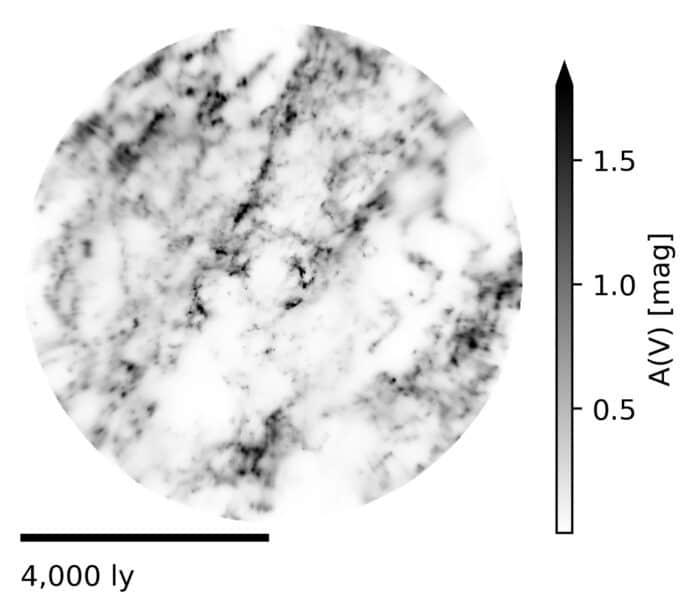We’re changing how we understand the Milky Way with the help of Gaia. Instead of just seeing flat images, scientists are now creating 3D maps showing matter distribution in our galaxy. These maps use interstellar dust, which is essential for things like forming stars and making planets. The dust also helps measure the distance to objects like stars.
Making these 3D maps is a complex job because of limited data, but scientists can use statistics and computer models to create detailed maps with uncertainties. This helps them explore the Milky Way in new ways and understand the space around them better.
In a collaboration led by the Max Planck Institute for Astrophysics with scientists from Harvard, the Space Telescope Science Institute, and the University of Toronto, scientists have created detailed 3D maps of the Milky Way, going far beyond- over 4,000 light-years away. The new 3D map will help us in various ways, like understanding how stars form and cosmological foreground correction.
Scientists devised a new way to create dust maps in space. They developed a statistical method that helps model the smooth structures in large areas necessary for making these dust maps. The technique uses an algorithm to gradually add more details to an essential 3D representation of the dust. Doing this step by step makes the process much more straightforward and faster.
Scientists used the latest Gaia data and their new method to create the most extensive and detailed map of interstellar dust. This 3D map covers a vast space of 4,077 light-years in all directions from the Sun, with a resolution of just a few light-years. It’s a valuable tool for studying the space between stars in the Milky Way and helps in determining how stars form.
Scientists noted, “Also, the 3D dust map will be important for correcting astrophysical observations. For many observations, the interstellar medium in front of the object of interest is a nuisance. The new 3D dust map will allow correcting these measurements for the foreground material in a much larger volume than previous maps.”
